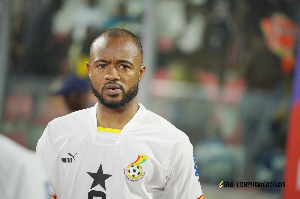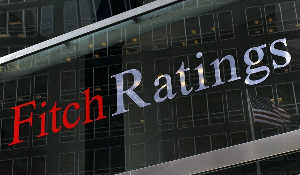President John Agyekum Kufuor leaves Accra on Friday, July 12 on a day's official visit to Freetown, Sierra Leone to attend the inauguration of President Ahmad Tejan Kabbah for a second five-year term.
President Kabbah, 70, a former UN Diplomat for 20 years before he entered into politics won 70 per cent of the votes cast by the 2.3 million registered voters out of the 5.2 million Sierra Leoneans. Leading the Sierra Leone People's Party (SLPP) against a host of eight challengers during the elections held on Tuesday, 14 May President Kabbah also won a strong majority in Parliament winning 83 out of the 112 seats.
His nearest challenger Ernest Koroma of the former ruling All People's Congress had 22 per cent of the vote cast and 27 seats and the remaining two seats went to the party of the one-time junta leader Johnny Paul Koroma Mr Alimamy Pallo Bangura of the Revolutionary United Front Party (RUFP) had only 1.7 per cent of the votes cast and failed to take a single seat in the new Parliament.
Observers for the elections from the Commonwealth, European Union and the United States Carter Centre said the elections were free and fair. President Kabbah was elected for the first time in 1991 but after being in power for a few months the rebels took up arms.
Sierra Leone's government and rebel leaders declared an end to their decade-long civil war on Friday, 18 January when they watched thousands of weapons burnt in a ceremonial bonfire. President Kabbah and President Kufuor set the fire with torches to some 3,000 weapons in Lungi, across the Sierra Leone River from the capital Freetown. Of the Regional Leaders invited to the ceremony, president Kufuor was the only one to turn up.
The war in the West African country, the worst place to live on earth according to a U.N. league, had horrified the world with its images of mutilated civilians; their hands and feet hacked off by fighters, who were often children. Up to 50,000 people have been killed and thousands more maimed, raped or robbed. Hundreds of thousands have been forced to flee their homes.
The ceremony rounded off many months of work on a UN-brokered peace plan, under which more than 47,500 rebels and government militiamen had turned in their weapons. Revolutionary United Front (RUF) Leader Foday Sankoh launched the war in March 1991 ostensibly to end decades of corrupt rule. The government detained him at a secret location since the last major flare-up of fighting in mid-2000.
The end of the disarmament marked a complete turn around of fortunes for the world's biggest U.N. Peacekeeping Force, which appeared close to failure after rebels took hostage hundreds of their rank in May 2000. That prompted former Colonial Power Britain to intervene to protect Freetown, which had been ransacked in two previous rebel advances and to train a newly formed army.
A ceasefire was signed in November 2000, broadly halting fighting and allowing the U.N. to deploy throughout the country. But obstacles remain to lasting peace not least the fate of the grizzled bush fighter Sankoh, who is widely expected to be among those to face a war crimes tribunal Sierra Leone and the United Nations had set up.
General News of Friday, 12 July 2002
Source:
















